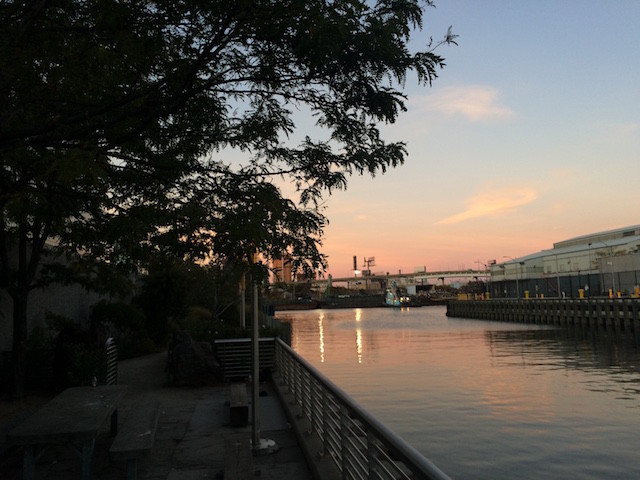
It’s been a long 18 months. If the all-consuming and nauseating electoral coverage we’ve been marinating in has you world-weary and longing for an antidote, it might be time for a nature walk, immediately. In this city, you can pretty much get whatever you want, whenever you want it; with the exception of “peace and quiet,” of course. So it helps to have a couple quick-fix nature tricks up your sleeve. If you need a dose of tranquility pronto, start where you least expect it: the Wastewater Treatment Digester Eggs illuminating the horizon between Brooklyn and Queens. These monuments of industrialization will actually lead you to the covert wilderness salvation of the Newtown Creek Waterfront Nature Walk.
At first, this nature walk seems ironic. Newtown Creek is one of the most polluted waterways in the nation, and was designated a superfund site in 2010. In fact, on my first visit recently I was sort of expecting the trek to be a bit of a stunt – “look at me, I hang out in oil spills” – but I was mistaken. It is hands-down the most tranquil spot in the neighborhood, and it is exactly what you need to chill out and refresh your perspective.
Nature writer David Gessner suggests that as humans become increasingly withdrawn from nature, we romanticize the nature that’s been lost. “As we move away from it, a wild part of us misses our original, ancestral home,” Gessner says, “and that home is nature.”
A stroll along a toxic urban canal may not be your first choice when the wild side of you is craving a respite, but the Newtown Creek Nature Walk is an enchanting urban oasis that offers up loads of wisdom about the original ancestral home of North Brooklyn.
________
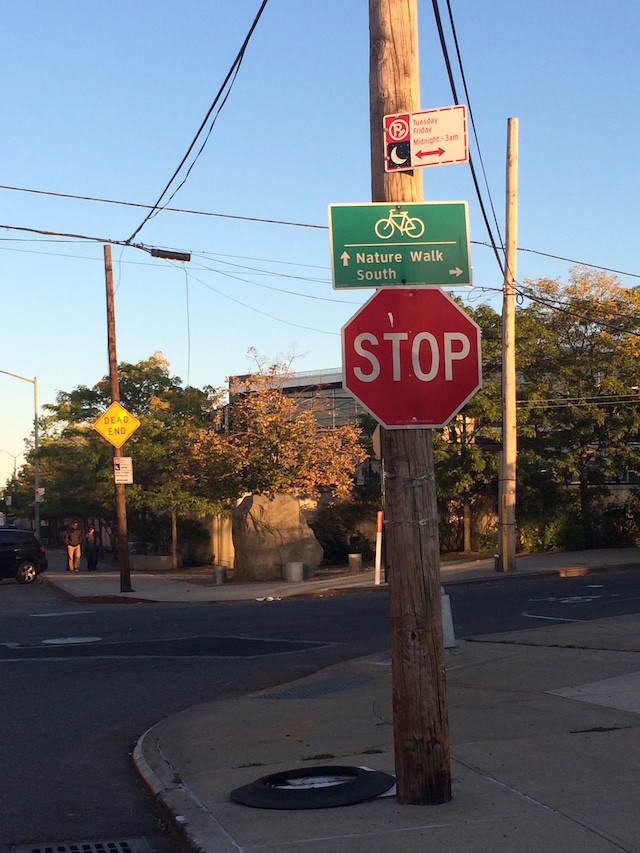
Newtown Creek is a 3.8 mile tidal arm of the New York-New Jersey Harbor Estuary that separates Brooklyn from Queens. According to the EPA, Newtown Creek once drained western Long Island and flowed through wetlands and marshes. By the mid-1800s, however, the area next to the Creek was one of the busiest industrial areas in New York City. Its banks were home to more than 50 oil refineries, as well as petrochemical plants, fertilizer and glue factories, and lumber and coal yards.
In 1856, the city decided the Creek was a great place to dump raw sewage. During World War II, it was one of the busiest ports in the nation, crammed with commercial vessels carrying oil and chemicals that further sullied the water with countless spills.
The Newtown Creek Nature Walk reconciles the Creek’s conflicting identities. The space was designed by environmental sculpture artist George Trakas, and built by the Department of Environmental Protection (DEP) through the New York City Department of Cultural Affairs Percent for Art program, to be “a vibrant intersection where multiple histories, cultural identities, and geologic epochs coexist.”
Here’s how to make the most of this unexpected escape from the city:
Start your walk on the wild side
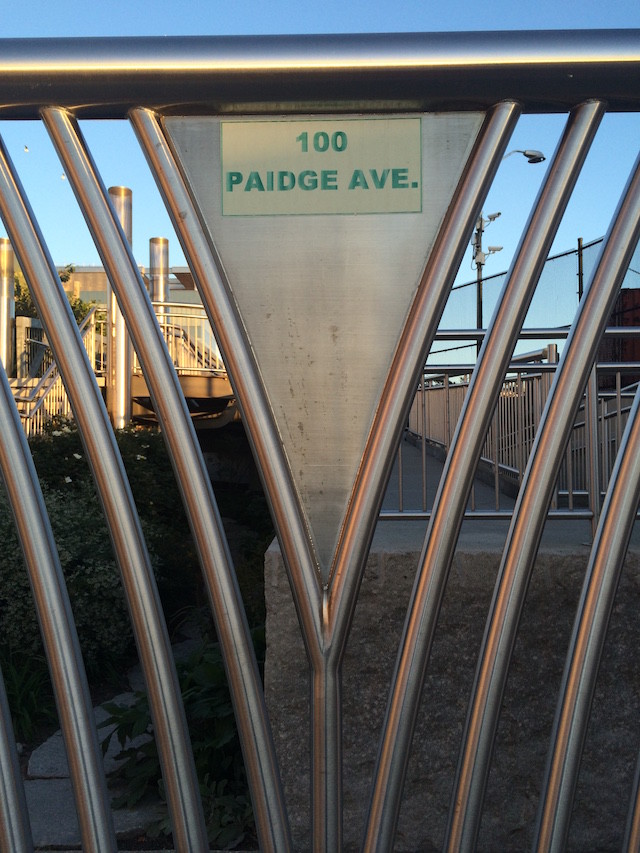
Begin your journey by trekking under the Pulaski Bridge on the northern tip of Greenpoint, and heading east on Ash Street until you pass an enormous Time Warner building. (Try to avoid looking at this building, or thinking about Time Warner. Try to avoid questioning why in the world your bill for basic internet has tripled in the last three years. Literally tripled! Try not to think about telecom conglomerates. It’s nature time.)
When you can’t go any further, you’ll spot the park’s gleaming entry gates, which are composed of stainless steel pipes designed in a wave shape to mimic the movement of water. The path diverges here and you have the chance to discover the first delightful surprise of the walk: there is real nature here!
________
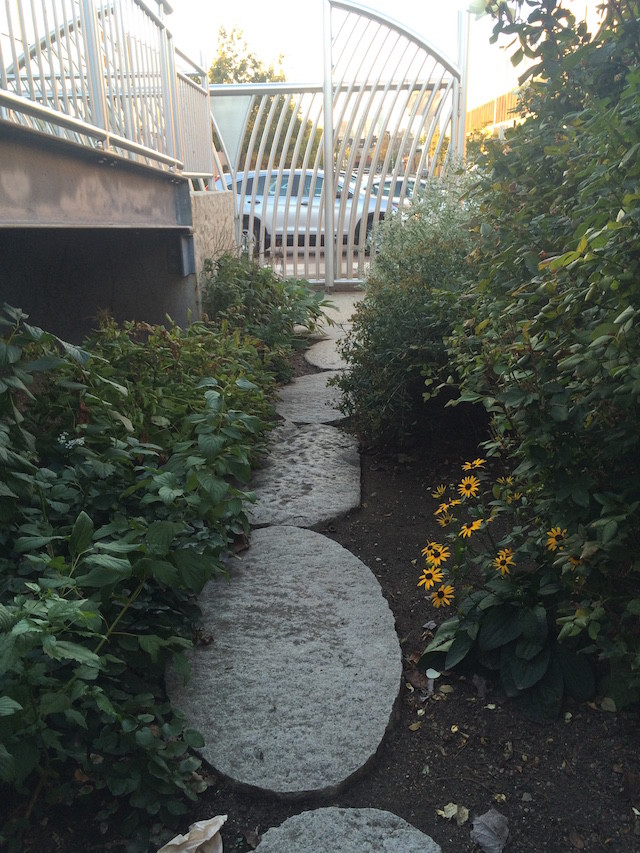
Behold the secret garden
A fieldstone path leads you beneath the bridge into a fragrance garden planted with a variety of native species. Chrome plaques identify the indigenous plants and describe their historic industrial and medicinal uses. The strong wood of beautiful trees like Shadblow was used to build ships and net halibut. The roots and berries of flowering shrubs like Solomon’s Seal once soothed upset stomachs and healed broken skin. The garden is a welcome reminder that the earth gives us what we need.
________
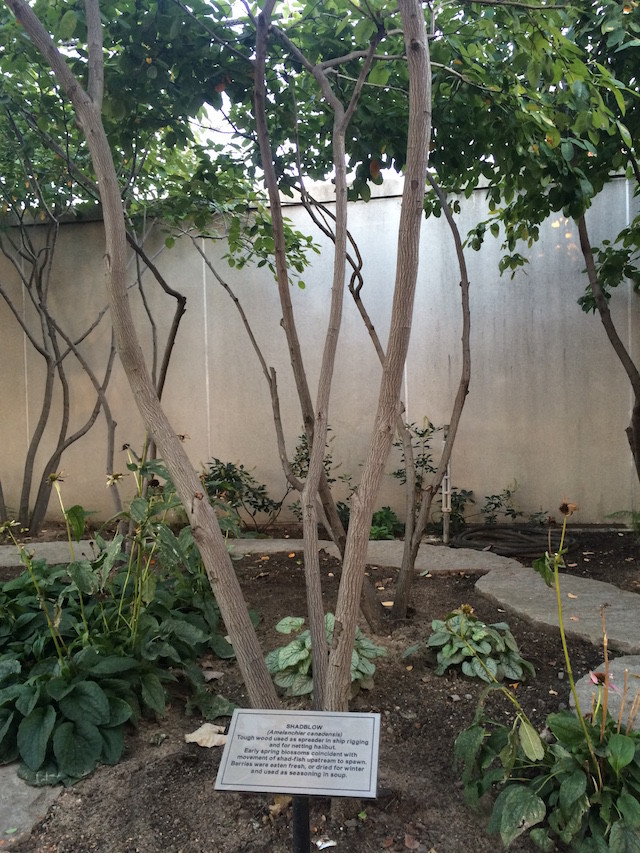
________
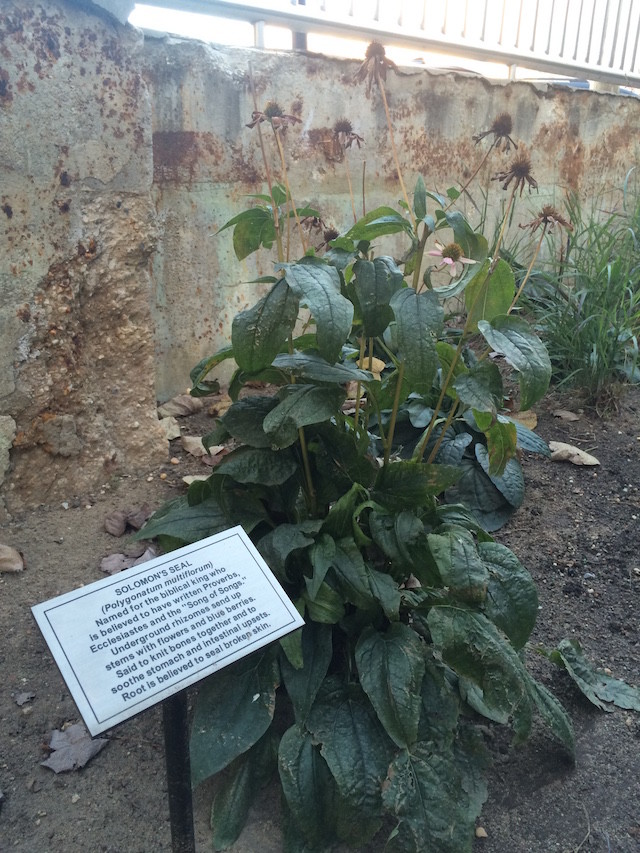
Get your sea legs on “the vessel”
Head up the steps (or wheelchair accessible ramp) to the main path, and cross the 40-foot steel bridge to “the vessel.” One of the coolest features of the walk, the 170-foot vessel looks just like an old boat!
________
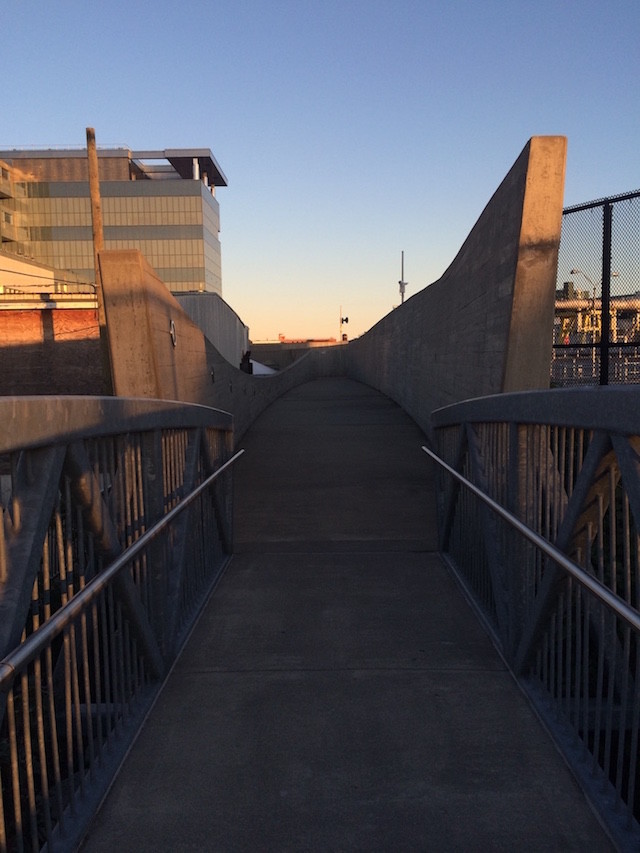
The vessel has 13-foot high bowed walls that resemble the design of old ships once built in Greenpoint on the shores of the East River in the 1800s. According to the official site, “the original boats were nearly twice the size of the Nature Walk vessel” and were built from lumber delivered to Whale Creek from Nova Scotia.
Do a meditative dance in homage to the OG Greenpointers
When you exit the path, you’re greeted with sweeping views of the beautiful Newtown Creek waterfront and the rising Long Island City skyline. Do a meditative dance like the artist, Trakas, intended around his next installation – seven stone circles. The granite stones are etched with native place names used by the Lenape people who were indigenous to the area. Each name is engraved at a different angle so that you can see the place it identifies when you read it, such as mespaethes or “great brook with tide” for Newtown Creek, and o jik ha da ge ga, or “salt water,” for the Atlantic Ocean.
________
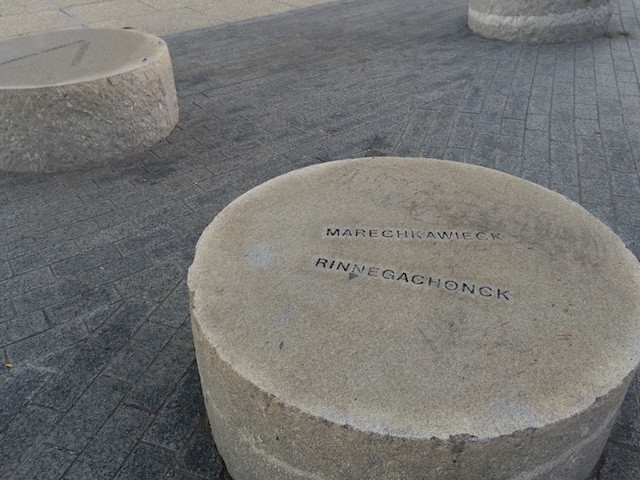
Think some deep thoughts about nature vs. machine
Take a seat on one of the waterfront stones and soak in the quiet, meditative beauty. You might catch a glimpse of some creek traffic. On my visit, I watched a sky-blue tugboat named Caitlin Ann chug slowly by, nudging a barge the size of a city block over to the Sims Metal Management scrapyard on the opposite shore, where a massive claw loaded it with crumpled cars. There’s a sense that this once-flourishing place was killed off long ago, and now its banks are the final resting spot for dead things.
________
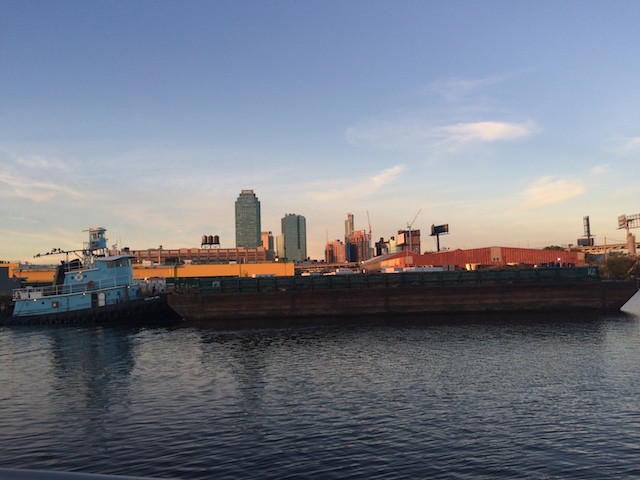
Here in the park, however, life has been preserved. The Nature Walk only extends for a quarter-mile around the perimeter of the wastewater treatment plant, but it reaches four billion years into the geologic past.
________
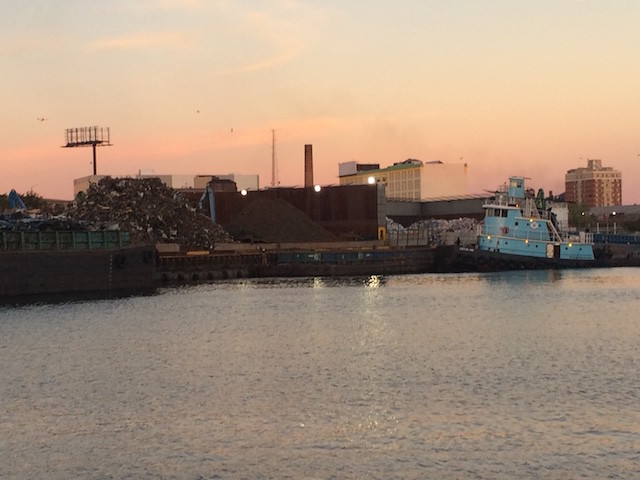
________
Go back to a simpler time before politics (or mammals)
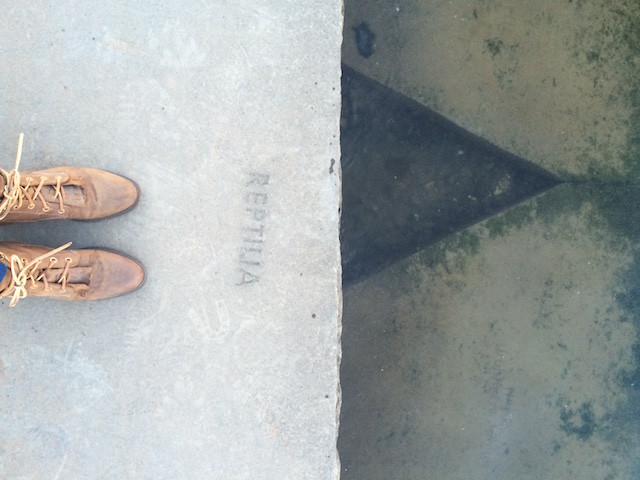
If you really want to put things in perspective, explore the set of granite steps leading down to the water and contemplate a universe composed of single-cell organisms. The steps are engraved with the names of eras dating from the Precambrian to our current era, Pleistocene. They also bear the names of life forms, like mollusca (snails) and mammalia (people), and Newtown Creek marine life, like oysters and mackerel, that all play a role in Newtown Creek’s natural history.
Contemplate the journey of a billion trillion drops of rain
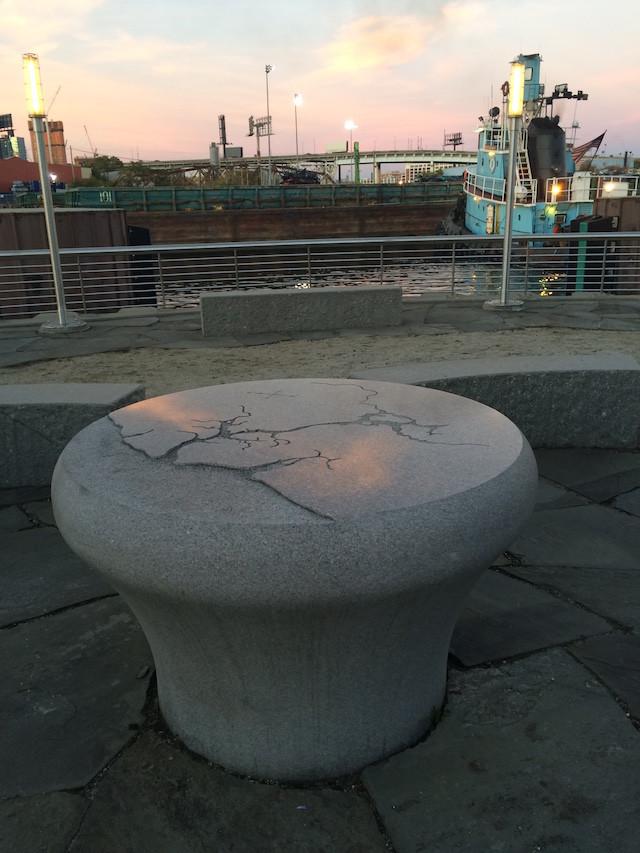
Between two weeping willows at the corner of Whale Creek you’ll spot the watershed bollard. This huge sculpture is in the shape of the posts that were once used to secure ships in port. Its surface is engraved with an etching of Newtown Creek’s original watershed. It even has a slight gradient, so that a falling raindrop can replicate the journey of the Creek’s original waters.
What makes this toxic waste dump so special?
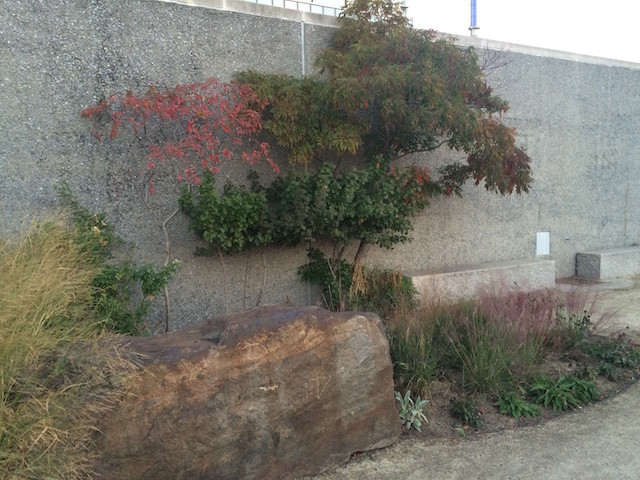
Visiting the peaceful DEP funded-park left me with a question: what was the impetus for this improvement plan in the first place? It turns out that not so long ago, in 2002, the captain of a New York Harbor patrol boat took an exploratory cruise one day up an unfamiliar waterway, Newtown Creek. The Captain, John Lipscomb, was required to report any pollution concerns he discovered on his 180-mile harbor beat to his employer, Riverkeeper. That day on Newtown Creek Lipscomb re-discovered Greenpoint’s dirty little secret, a deadly underwater oil plume.
“There was all this black, black crude oil that was all over the water,” he told the Brooklyn Ink. “It was everywhere — I had never seen anything like that before.”
The plume was the result of the 150 years of prolific oil refinery action by companies that now comprise current industry giants ExxonMobil, Chevron/Texaco and BP. It is estimated that 17-30 million gallons of oil have leaked from these refineries over the past century, forming a 50 acre underground oil plume and leaching into the Creek for decades. This discovery finally led to years of legal action and financial penalties for oil companies that had gotten off scot-free for decades. Thanks to a massive community mobilization effort to clean up and revitalize the Newtown Creek, we have this lovely park.
Okay, back to politics
There is a greater lesson to all this: oil leaks are inevitable. Oil will destroy a natural habitat to the point that its interlocking ecosystems of plants, animals, and people grind to a halt. The corporations currently muscling to build an oil pipeline through North Dakota Sioux territory, need only look to Newtown Creek for an example of what happens to nature when industry comes to town. It dies. You wind up building memorials on its skeletal remains to remind people that it was wild once.
As we enter into the next chapter of an incessant battle over which members of a society have claims to their nation, the Newtown Creek Nature Walk can serve as a steadfast go-to site for quiet contemplation. After all, as the Nature Walk’s seven stones remind us, the land beneath our feet is never really ours. It was here long before New York was New York or Greenpoint was Greenpoint. Once it was keshaechquereren, or “grassy expanse,” named by the Lenape people who were among the first drink from its wild shores and call it home.
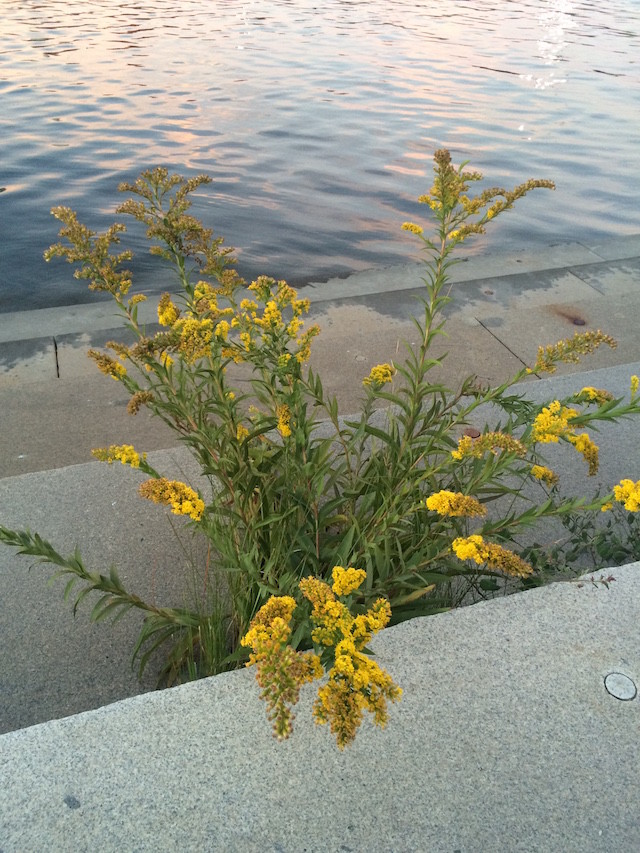
One Response to
Leave a Reply




Love your article about the green walk. I have been in this neighborhood for more than 40 years and love how it has transformed. It is beginning a beutiful gentrification. It was ugly and dirty when I first came here in the late 70s. I made my living there and still have interests in the area. Love the article.